Cihan Geyik
AI Tools
5
min read
Apr 23, 2025
Top 10 Prospecting Tools to Supercharge Your Sales Funnel in 2025
The sales landscape is fiercely competitive and constantly evolving. Staying ahead means equipping your team with the best tools, and as we look towards 2025, leveraging technology effectively is non-negotiable. Prospecting – the critical first step of identifying and engaging potential customers – lays the groundwork for your entire sales pipeline's success.
We understand the pressure to find qualified leads efficiently and personalize outreach at scale. That's why harnessing the power of Artificial Intelligence (AI) in prospecting isn't just a trend; it's becoming the standard for high-performing teams.
This post dives into the top 10 types of prospecting tools, highlighting specific examples that we believe will be essential for supercharging your sales funnel in 2025. We'll explore how these tools use AI, automation, and data-driven insights to help you pinpoint ideal customers, generate better-qualified leads, and nurture them effectively. Let's explore the technologies poised to give your sales team a significant competitive advantage.
1. AI-Powered Prospecting Platforms
What they do: These platforms act as intelligent command centers for identifying potential customers. They leverage AI and machine learning to analyze vast datasets (web data, social signals, firmographics, technographics, intent data) to surface companies and contacts matching your Ideal Customer Profile (ICP) with high precision.
Why they matter in 2025: They move beyond basic filters, using predictive analytics based on your best customers' traits. This drastically cuts down manual research time and focuses your team's efforts on prospects with the highest likelihood of converting, improving efficiency right from the start.
Key Consideration: Evaluate platforms based on data coverage relevant to your industry, the sophistication of their AI/ML models, and seamless integration with your CRM.
2. Agentic Automation Platforms for Go-To-Market (e.g., Empler AI)
What they do: Tools like Empler AI represent a newer wave, using multiple specialized AI "agents" that collaborate within automated workflows for GTM tasks. For prospecting, this could involve agents finding prospects based on trigger events (e.g., funding rounds, new executive hires), enriching profiles, scoring leads against ICP criteria, verifying contact info, and pushing qualified leads into CRM or outreach tools (like HubSpot, Salesforce, Apollo).
Why they matter in 2025: This agentic approach allows for highly customized and complex automation sequences that mimic sophisticated human workflows but operate at scale. It enables dynamic list building based on real-time signals, moving beyond static prospecting lists.
Key Consideration: Assess the flexibility of workflow customization, the quality and sources of enrichment data, and the robustness of integrations with your existing sales stack.
3. AI-Enhanced Social Selling Tools (e.g., LinkedIn Sales Navigator + AI Overlays)
What they do: Professional networks like LinkedIn remain vital B2B prospecting grounds. LinkedIn Sales Navigator offers advanced search and insights. The 2025 edge comes from layering AI tools (either integrated or third-party add-ons) on top. These can help identify conversation starters, automate personalized connection requests (use with caution to maintain authenticity), track prospect engagement more deeply, and prioritize outreach based on activity signals.
Why they matter in 2025: AI enhances the efficiency and effectiveness of relationship-building on these platforms, helping reps focus on the most promising connections and tailor their approach based on real-time social cues.
Key Consideration: Focus on AI tools that genuinely personalize and provide insights, rather than just automating spammy outreach. Ensure compliance with platform terms of service.
4. Predictive Lead Scoring Tools
What they do: These tools use AI to analyze prospect demographics, firmographics, and behavioral data (website visits, content downloads, email opens) against your historical conversion patterns. The AI assigns a score indicating sales-readiness, helping prioritize follow-up.
Why they matter in 2025: Moving beyond simple activity tracking, predictive scoring anticipates future behavior. This ensures high-intent leads receive immediate attention while lower-scoring leads enter appropriate nurturing tracks, optimizing resource allocation and improving conversion velocity.
Key Consideration: The accuracy of predictive models depends heavily on the quality and volume of your historical data. Ensure the tool integrates tightly with your CRM and marketing automation platform.
5. AI Sales Assistants & Autonomous SDRs (e.g., Artisan's Ava, Nooks AI)
What they do: These AI agents function like tireless Sales Development Representatives (SDRs). They can automate significant portions of outbound prospecting, including lead research, crafting personalized email drafts using Natural Language Generation (NLG), executing multi-touch sequences, handling initial qualification chats, and booking meetings.
Why they matter in 2025: They allow human SDRs to focus on higher-value activities like strategic planning, handling complex objections, and building deeper relationships, enabling significant scaling of outreach efforts without a linear increase in headcount.
Key Consideration: Evaluate the quality of AI-generated personalization, the level of human oversight required, ethical considerations in automated communication, and calendar integration capabilities.
6. Personalized Video Platforms (e.g., Maverick, Vidyard)
What they do: To cut through inbox noise, platforms like Maverick or Vidyard use AI to create personalized video messages at scale. Reps record a template, and AI dynamically inserts personalized elements (name, company, relevant data points) for each recipient.
Why they matter in 2025: Video's novelty and personalization significantly boost engagement rates compared to plain text. It helps build rapport faster and can be used effectively for initial outreach, follow-ups, or re-engagement campaigns.
Key Consideration: While scalable, ensure videos maintain authenticity. Measure engagement metrics (views, clicks) to refine your approach. Consider use cases beyond initial outreach, like personalized onboarding or support.
7. AI-Powered Sales Engagement Platforms (e.g., Reply.io, Regie.ai, Outreach, Salesloft)
What they do: These platforms orchestrate multi-channel outreach (email, phone, social). The AI layer enhances them by A/B testing messaging, optimizing send times, generating personalized text snippets based on prospect data, analyzing reply sentiment, and suggesting next best actions.
Why they matter in 2025: AI transforms these platforms from simple sequencers into intelligent engagement engines. They ensure consistent follow-up while continuously learning and optimizing outreach strategies based on performance data, improving overall campaign effectiveness.
Key Consideration: Evaluate the depth of AI features (e.g., sentiment analysis, generative AI quality), multi-channel capabilities, reporting/analytics, and integration with your CRM.
8. Contact Finding & Data Enrichment Tools (e.g., Seamless.ai, ZoomInfo, Apollo.io, Empler AI Enrichment)
What they do: Accurate contact data is fundamental. Tools like Seamless.ai, ZoomInfo, or Apollo.io specialize in providing verified B2B contact details, often using AI for validation. Crucially, they also offer data enrichment, automatically appending valuable context (company size, funding, tech stack, recent news) to prospect records. Platforms like Empler AI also incorporate enrichment as a core part of their agentic workflows.
Why they matter in 2025: Enriched data fuels everything else – better segmentation, more relevant personalization, accurate lead scoring, and informed conversations. AI improves the accuracy and real-time nature of this data.
Key Consideration: Assess data accuracy guarantees, geographic/industry coverage, GDPR/CCPA compliance, update frequency, and integration ease with other sales tools.
9. AI-Powered Chatbots & Conversational AI
What they do: Modern AI chatbots (built with platforms like Voiceflow, Drift, or integrated into hubs like HubSpot) engage website visitors proactively. They can ask qualifying questions, understand natural language, provide relevant content, capture lead info, and schedule meetings directly with sales reps.
Why they matter in 2025: They act as a 24/7 digital SDR on your website, ensuring immediate engagement with interested visitors and capturing valuable leads that might otherwise be lost, qualifying them before they even reach a human rep.
Key Consideration: Design conversational flows carefully to be helpful, not annoying. Ensure seamless handover to human reps when needed. Integrate chatbot data directly into your CRM.
10. CRM-Integrated AI (e.g., Salesforce Einstein GPT, Microsoft Copilot for Sales, HubSpot AI Features)
What they do: Prospecting intelligence is most powerful when embedded directly within the CRM. Tools like Salesforce Einstein GPT, Microsoft Copilot for Sales, and HubSpot's AI features bring AI assistance into the daily workflow. They can summarize interactions, draft personalized follow-ups, surface relevant data during calls, identify opportunities, and provide real-time coaching.
Why they matter in 2025: By reducing administrative work and context switching, integrated AI empowers reps with timely intelligence exactly where they work. This makes prospecting activities within the CRM more efficient and data-driven.
Key Consideration: Evaluate the specific AI features offered within your CRM ecosystem, their relevance to your prospecting workflow, user adoption, and potential additional costs.
Conclusion: Embrace Intelligent Prospecting
Looking ahead to 2025, AI-driven prospecting tools are transitioning from optional upgrades to essential components of a high-performing sales engine. The tools highlighted above offer diverse capabilities, from intelligent lead identification and automated outreach to deep personalization and predictive insights.
Successfully integrating these technologies means empowering your team to work smarter, not just harder. It allows them to focus on building meaningful relationships with the right prospects at the right time, ultimately driving more predictable and significant revenue growth.
The key is strategic adoption: choose tools that solve your specific bottlenecks, integrate smoothly with your existing technology stack, and provide actionable data for continuous improvement. By embracing the power of AI, you can transform your sales funnel into a highly efficient, lead-generating machine ready for the challenges and opportunities of 2025 and beyond.
Sources & Further Reading:
Allego Blog: "AI in Sales Examples: 10 Creative Ways Teams Use AI Today"
Artisan Blog: "7 Best Strategies to Get Leads With AI Lead Generation Tools"
Empler AI: https://www.empler.ai/
LinkedIn Sales Solutions Blog: (Search for relevant AI/Sales Navigator articles) https://www.linkedin.com/business/sales/blog
Maverick: https://www.trymaverick.com/
Reply.io: https://reply.io/
Regie.ai: https://www.regie.ai/
Seamless.ai: https://www.seamless.ai/
HubSpot: https://www.hubspot.com/ (Explore their AI features)
Salesforce: https://www.salesforce.com/ (Explore Einstein GPT features)
Microsoft Copilot for Sales: https://www.microsoft.com/en-us/microsoft-copilot/microsoft-copilot-for-sales
(Disclaimer: Mention of specific tools does not constitute an endorsement over other similar tools. Teams should evaluate solutions based on their unique requirements and conduct thorough due diligence. We are not affiliated with the listed tool providers unless otherwise stated.)







